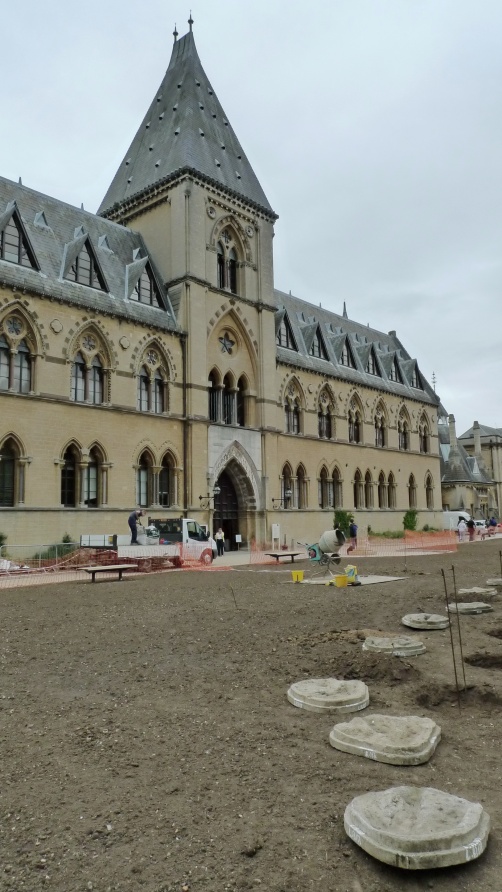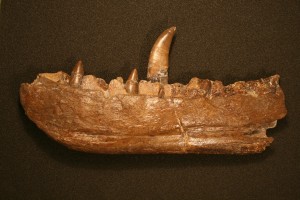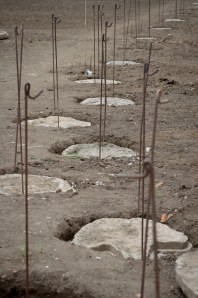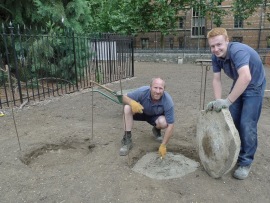
During our closure year, we’ve been having a little landscaping done to our outside space. One of the things I missed while the lawn was being dug up is seeing children hopping, skipping and jumping along the dinosaur footprint casts which cross the grass.
The dinosaur prints provide a lovely introduction to geology, even before you step through the door, so I was delighted to hear that they were included in the new landscaping plan. Even better news was that they were due to be put back in a new formation, which more closely represents the way the dinosaur moved.

The prints are casts taken from a fossilised trackway discovered at Ardley Quarry near Bicester in 1997. It is believed they may have been made by the large three-toed carnivore Megalosaurus bucklandii, which roamed the lagoons of Jurassic Oxfordshire some 166-168 million years ago.
The world-famous lower jaw found by William Buckland in the village of Stonesfield, and pictured here, is one of the treasures of the Museum’s Earth Collections. You can see the Megalosaurus jaw for yourself in our Natural Histories exhibition which is running at the Museum of the History of Science until 29 September.

For the past few weeks, Juliet Hay, Preparator and Conservator in the Earth Collections, has been seen diligently measuring and arranging the prints in front of the Museum. Juliet began by plotting out a ‘walking phase’, with a short stride length, and then used research based on an article published in the journal Nature to add in a ‘running phase’. Although the walking and running phases are actually separated at the quarry, GPS data has revealed that they are very likely to have been a continuous trackway, made by the same dinosaur.
Juliet needed to take into consideration the number of casts she had to play with, as well as the lawn’s new sprinkler system, so she emphasises that our trackway is an illustration of the dinosaur’s movements, rather than an exact replica. So now, our lawn footprints show the theropod dinosaur walking at around 4.23mph, breaking into a run reaching 18.14mph, then slowing back down to a walk at the end of its journey.

Juliet asked me to thank the University Parks team who helped her to shift the heavy casts into position with good grace. So, thanks go to Walter Sawyer and his intrepid team Carl, Richard, Nolan and Michael. She says “The casts are an important feature as they represent evidence of the first known theropod trackway to show dual speed and an associated change in gait. A pair of Mallard ducks that often visit in the summer seem to enjoy paddling in them too!”
Once our lawn is looking lovely again, do pop along, put your feet in the prints and see if you can keep up with a sprinting, three-toed, meat-eating dinosaur.
Rachel Parle, Education Officer


[…] I explained last week, the outside of the Museum has been getting a make-over, and the finishing touches are now rolling […]
[…] visitors to the Museum will know that we have a trackway of dinosaur footprints marching across our lawn. These casts were taken from the famous fossils discovered just up the […]
[…] this further, we need to stay in Oxfordshire, and combine the body fossils of Megalosaurus with the trace fossils of Ardley Quarry, and the research of Julia Day and colleagues, published in 2002 and 2004. And to really annoy you […]